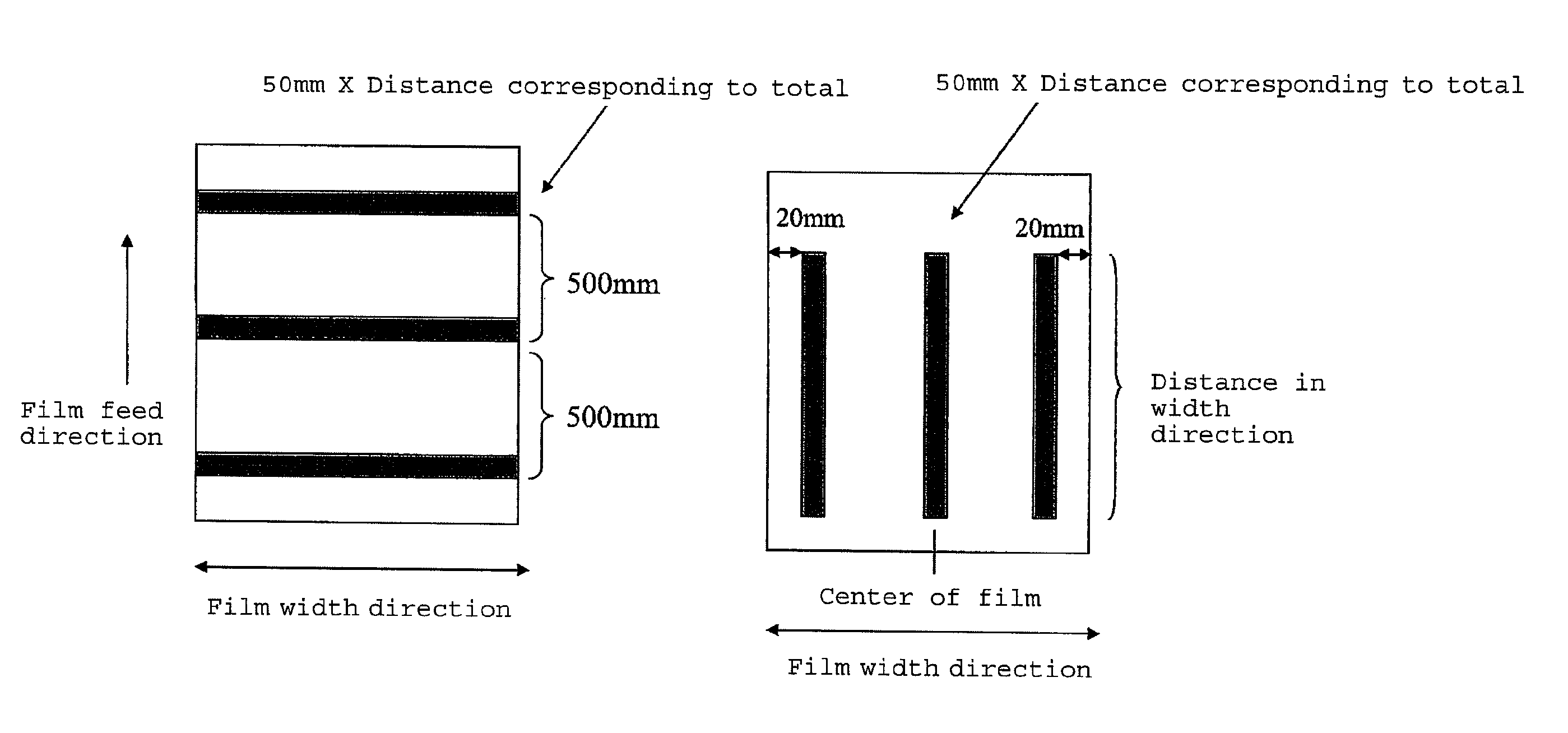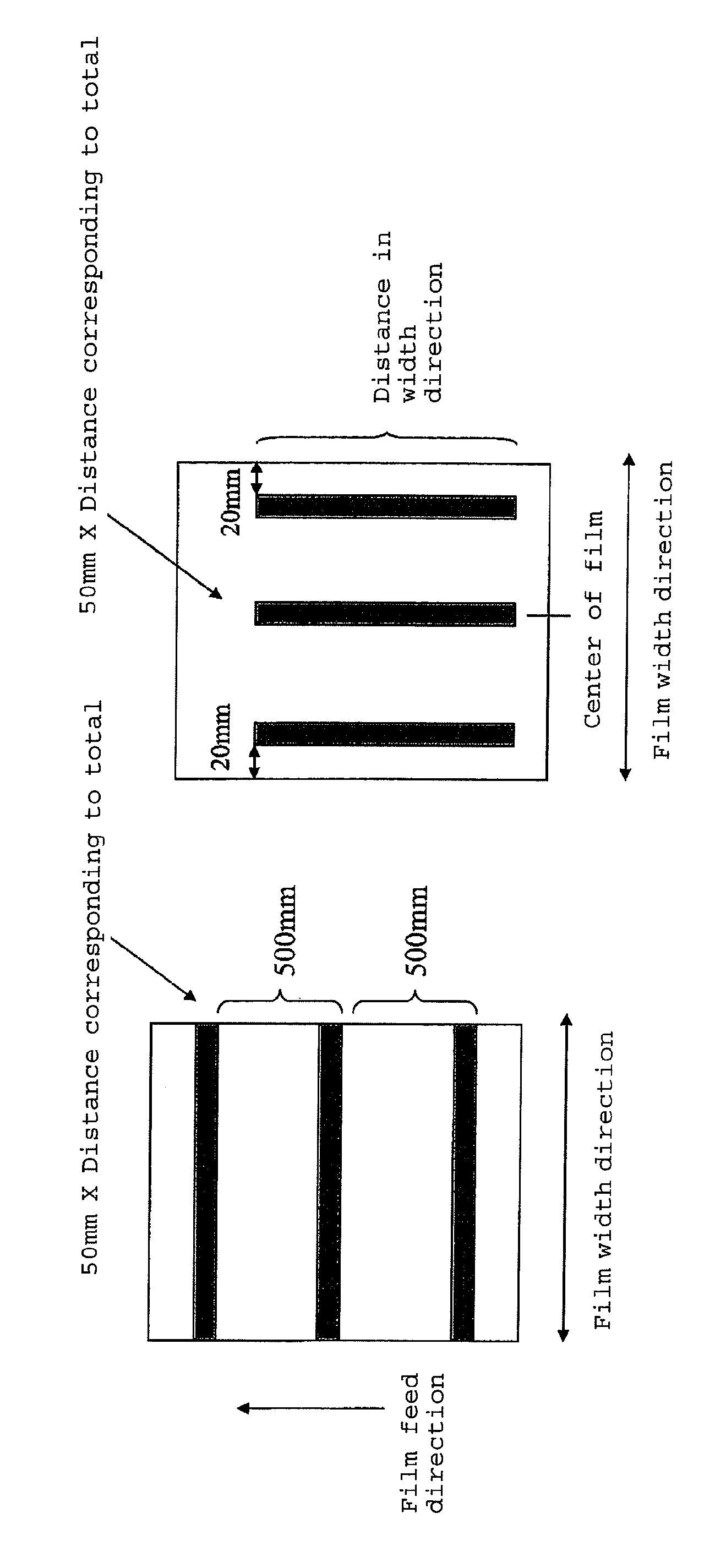Retardation film
a retardation film and film technology, applied in the field of retardation films, can solve the problems of difficult to achieve uniformity in retardation and difficult to obtain retardation films with few foreign matter defects, and achieve the effect of satisfactory retardation films with small foreign matter defects and small non-uniformities
- Summary
- Abstract
- Description
- Claims
- Application Information
AI Technical Summary
Benefits of technology
Problems solved by technology
Method used
Image
Examples
example 1
[0094]A pellet of a polycarbonate resin of optical grade which is a homopolymer of bisphenol A and manufactured by Teijin Chemicals Ltd. (trade name: AD-5503, Tg; 145° C., viscosity average molecular weight; 15,200) was dried at 120° C. for 4 hours with the dehumidification hot air drier of Matsui Seisakusho Co., Ltd. A single-screw extruder was used. The dried resin pellet was injected into the heating hopper of a melt extruder heated at 110° C. The cylinder temperature of the extruder was set to 270° C., and a SUS nonwoven fabric leaf disk-like filter having an average opening of 10 μm was installed between the extruder and a T-die. The molten resin right after delivery was extruded from the T-die set to 260° C. onto the surface of a rotating chill roll. The lip width of the extrusion die was 1,800 mm, and the lip opening was 1 mm. A die lip having a flat under surface without any irregularities was used. Three chill rolls were used and had a diameter of 360 mm, a le...
examples 2 to 4
[0097]The unstretched film roll obtained in Example 1 was stretched in the longitudinal direction by changing the stretching conditions, and the film was wound up. The physical properties of the obtained stretched film are shown in Table 1. Like Example 1, the film had small retardation nonuniformity and few defects and was suitable for use as a retardation film.
example 5
[0098]An unstretched film having a thickness of 43 μm and a width of 1,500 mm was formed in the same manner as in Example 1 except that R1 was set to 13.8 m / min and co-wound with a protective film to obtain a 1,000 m-long film roll. As for the thickness nonuniformity in the width direction of the obtained unstretched film, the thickness of the center portion (Tc) of the film was 43 μm, the thicknesses of the end portions (Te) at a distance of 20 mm from the ends of the film were 41 μm, and Tc / Te was 1.05.
[0099]Then, the film was stretched in the longitudinal direction with the same longitudinally stretching machine as in Example 1 and then laminated with a polyethylene protective film having a thickness of 30 μm, the edges of the resulting laminate were cut off, and the remaining film was wound up to obtain a rolled stretched film. The physical properties of the obtained stretched film are shown in Table 1. Like Example 1, the stretched film had small retardation nonuniformity and f...
PUM
| Property | Measurement | Unit |
|---|---|---|
| wavelength | aaaaa | aaaaa |
| wavelength | aaaaa | aaaaa |
| thickness | aaaaa | aaaaa |
Abstract
Description
Claims
Application Information
 Login to View More
Login to View More - R&D
- Intellectual Property
- Life Sciences
- Materials
- Tech Scout
- Unparalleled Data Quality
- Higher Quality Content
- 60% Fewer Hallucinations
Browse by: Latest US Patents, China's latest patents, Technical Efficacy Thesaurus, Application Domain, Technology Topic, Popular Technical Reports.
© 2025 PatSnap. All rights reserved.Legal|Privacy policy|Modern Slavery Act Transparency Statement|Sitemap|About US| Contact US: help@patsnap.com


